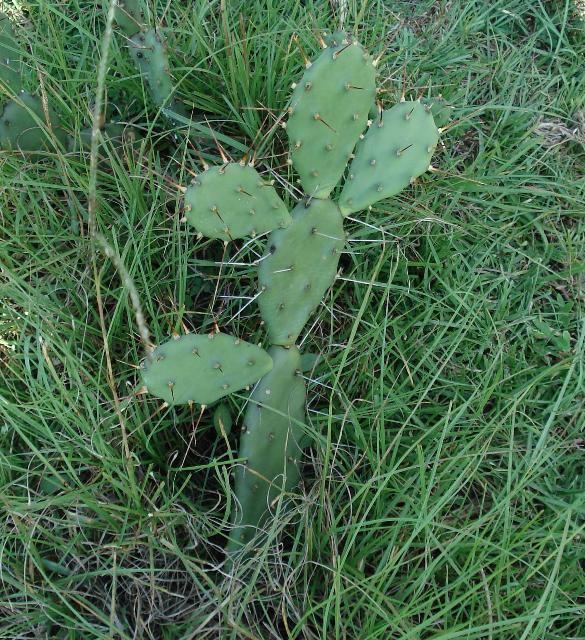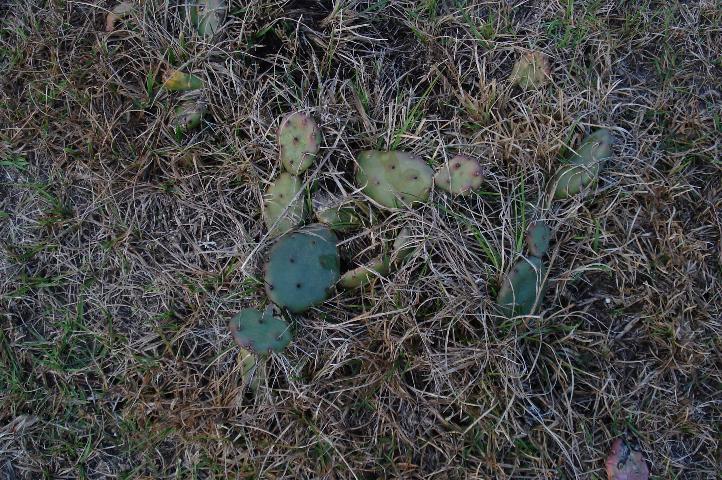
Traditionally, the most common herbicide program for prickly pear control has been Remedy plus diesel fuel or basal oil. However, this program is costly since high rates are needed (20% solution) and grass injury around the cactus plant is very high. A better alternative would be fluroxypyr, the active ingredient in Vista herbicide. Photo Credit: Jay Ferrell
Cleanwave herbicide has been a good product for pasture weed control for the last 6 years. It has been an effective and relatively inexpensive way to control larger dogfennel and prickly pear cactus. Although this product was found to be highly useful in Florida, it was not registered in any of the other 50 states. This being the case, Dow has chosen to no longer support Cleanwave due to the logistical challenges of producing a product for only one state.
Dr. Sellers and I have been expecting this move for the past 2 years and have been collecting data to compensate for the loss of Cleanwave. Below are the new recommendations for dogfennel and prickly pear.
Dogfennel
We rarely, if ever, recommended Cleanwave alone for dogfennel. It was commonly sprayed with 2,4-D or GrazonNext HL. Instead of using 14 oz/A of Cleanwave, you can now mix Pasturegard HL at 8 oz/A with 2,4-D or Grazonnext HL. This combination is effective and price equivalent.
Prickly Pear Cactus
We have recommended Cleanwave at 50 oz/A. You will now be required to use Vista XRT at 22 oz/A. Vista XRT will be highly effective, but availability may be an issue. Vista XRT is not in the AG product line for Dow – rather it is considered a “specialty” product. Some dealers carry both the AG and specialty line, others are only AG dealers. You may need to check with individual dealers to determine who can source this product.

It is important to note that though Vista is effective on prickly pear, control is generally not rapid. It is common for treated plants to persist this way for 6–8 months after the application. Just because the plants do not disappear quickly does not mean the herbicide isn’t working. Photo Credit: Jay Ferrell
For the most recent herbicide recommendations for pastures and hay fields, download the following UF/IFAS Publication: Weed Management in Pastures and Rangeland—2014
- The How and Why of Preemergence Herbicide Incorporation for Row Crops - April 28, 2017
- Using Dicamba on Dicamba-Tolerant Crops - March 3, 2017
- Managing Dicamba Drift when using New Dicamba Resistant Cotton Varieties - January 27, 2017
